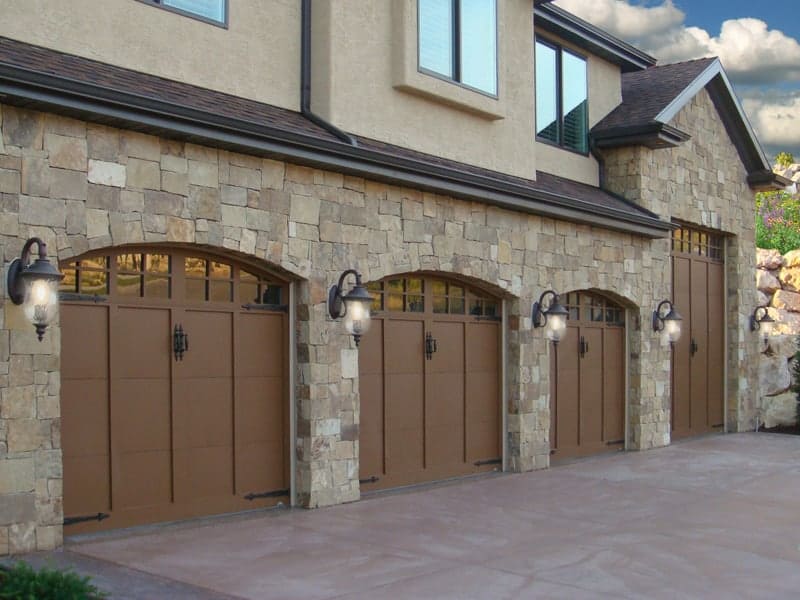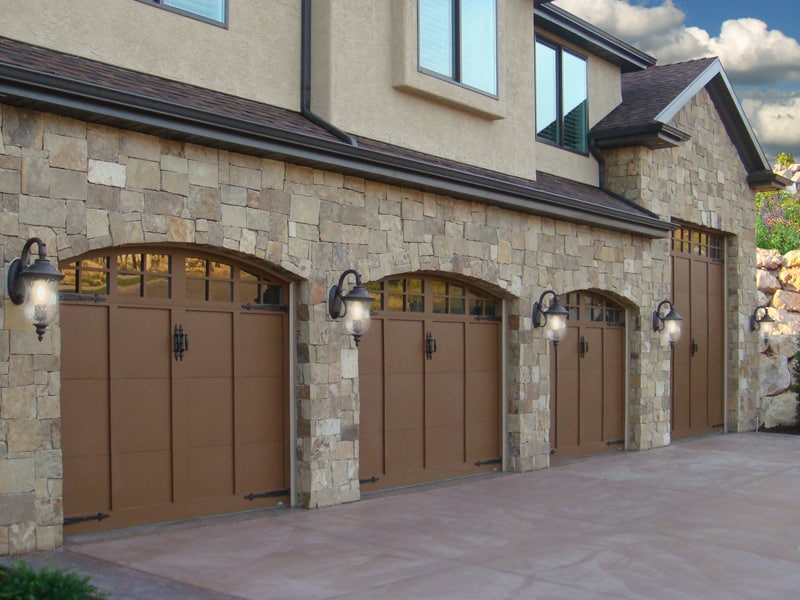A garage door adds both security and access to your home. While a garage door can help control who comes in and out of your garage, it might not always be able to restrict what you can’t see, including small critters and hot or cold drafts. Fortunately, you have a solution. Garage door weatherstripping can seal these entry points and help keep out unwanted elements. Learn more about how weatherstripping works to protect your garage.
What Are Garage Door Seals?

Image via Flickr by alexabing247
Garage door seals are also known as weatherstripping or garage door astragal. They’re found on all four sides of the garage door. They’re important because they help keep out rain, snow, debris, and pests. They do this by closing the gaps around the garage door. This can help keep your garage more secure and more comfortable.
Garage Door Bottom Seals
An uneven floor is typically the most common way external elements get inside a garage. When bad weather and small creatures find their way into your garage, they can ruin the cleanliness of the area and damage items you have in there. If you’re looking for garage door seals for uneven floors, choose a bottom seal. As the name suggests, a garage door bottom seal goes along the bottom edge of your garage door.
A garage door bottom seal for uneven floor is made from rubber. This long strip of material attaches to the bottom portion of the garage door. It’s typically flexible and easily compressible. When you shut the garage door, the overhead garage door bottom seal compresses down on itself to cover all the visible gaps in an uneven floor. Once a rubber garage door threshold is in place, animals like mice and insects and elements like cold breezes, water, and dirt have a difficult time finding a way into your garage.
There are several types of garage door bottom seals, so understanding the differences can help you decide which one will suit your needs.
- T-Type: A T-type seal looks like an upside-down “T.” It’s used with single-channel retainers.
- J-Type: Like the T-type seals, J-type seals are also used in single-channel retainers. When the garage door closes, the J-type seal looks like two “Js” on both sides.
- Bulb: Bulb seals are used in single-channel retainers. They’re shaped like long, round tubes that are narrow on the top. This shape allows the seal to push upwards and spread over uneven spots on the floor.
- Beaded: Beaded seals are made for double-channel retainers. Both sides of the strip bend upwards to fit inside the circular grooves. This type of bottom seal gets its name from its beads that help prevent water from coming inside.
Garage Door Threshold Seal
One of the best garage door seals to choose if you’re looking for superior water protection, energy savings, and bug defense is a threshold seal. A garage door threshold seal sits about a half-inch off the floor. It attaches directly to the concrete floor using liquid nails and caulk. It comes in a variety of sizes and strengths that can easily withstand the weight of a car. This seal adds a tall barrier to your garage floor that works in conjunction with the bottom seal to create a blockade against dirt, water, snow, and pesky animals.
Garage Door Brush Seal
Another type of garage door weatherstripping is a garage door brush seal. If you’re looking for a flexible solution to keep debris and cold drafts out of your garage, a brush seal might be the perfect option. A brush seal is made with long bristles that adjust to the height of an uneven floor. They essentially look like a large brush attached to the bottom of the garage door.
Since brush seals are extremely durable, they’re often used on commercial garage doors. In addition to mounting these seals on the bottom of a garage door, you can also mount them on the sides. While brush seals do a great job at keeping out hard debris, they’re less effective than a bottom seal at stopping water leaks.
Garage Door Vinyl Door Stop
It’s not just weatherstripping for the garage door bottom that you have to worry about. Since garage doors can shift over time after installation, you need something to seal the sides. These garage door weatherstripping sides are called vinyl door stops. Vinyl door stops are pieces of plastic that run along the sides of the garage. The vinyl is typically nailed into the wood, which provides a watertight seal along the garage door from top to bottom.
Reverse-Angle Mount Seal
In addition to a vinyl doorstop and brush seal, a reverse-angle mount seal is another option to consider for the sides of a garage door. A reverse-angle mount seal is a type of hard rubber plastic that makes a track on the side for the garage door to run through. The seal essentially creates a “U” and offers a snug fit on both sides of the garage door. It’s a type of seal that’s commonly found on commercial garage doors and heavy steel doors that screws can’t penetrate.
How to Choose the Best Garage Door Bottom Seal
When you’re ready to pick out the proper weatherstripping garage door seal, you have to decide what type of protection your garage door needs. If you live in an area that’s prone to heavy storms or flooding, you should consider one of the stronger and more water-resistant seals. On the other hand, if your area typically has milder weather, a standard seal is likely enough.
You should also think about how you want to use your garage. If it will pull double duty as a workshop or children’s play area, you’ll want a seal that offers exceptional protection from pests and drafts.
If you want to save on energy costs and prevent pests from getting inside your garage, the garage door experts at Overhead Garage Door, serving Barrington, Lake Zurich, Milwaukee, and the greater Chicago area, can help. Contact us or give us a call today at 888-256-2306 to learn more about our garage door weatherstripping solutions.

